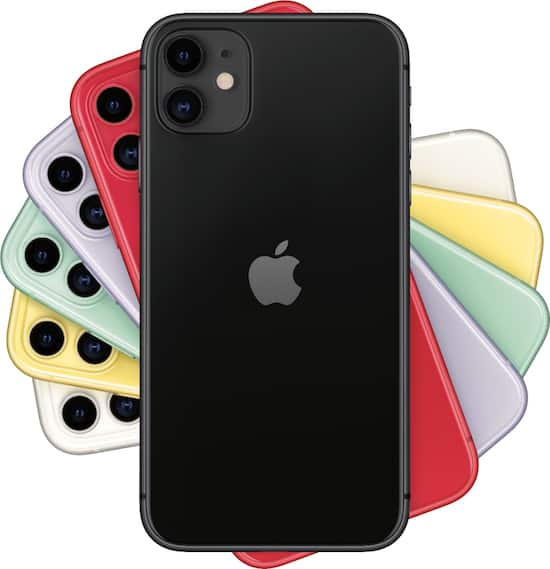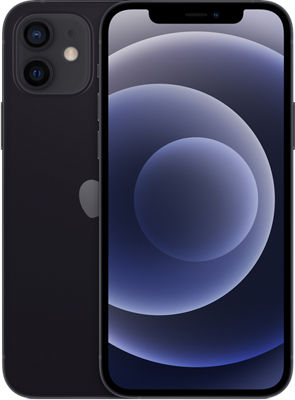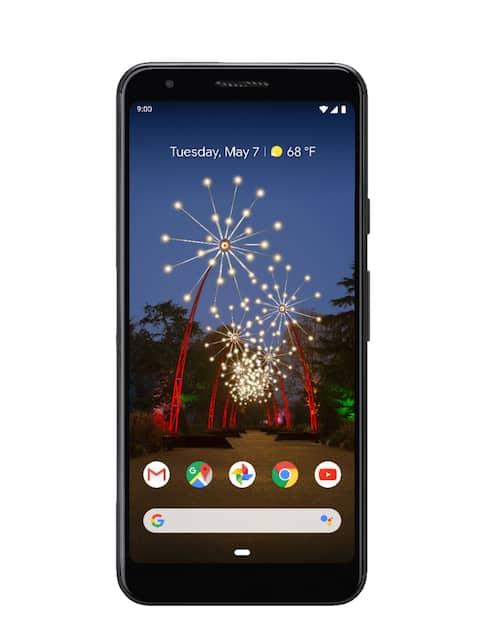Anker ROAV – SmartCharge 2-Port USB Vehicle Charger – Black
Keep gadgets powered and your vehicle in check with this dual-port ROAV SmartCharge Spectrum car charger. Its built-in car locator and engine battery monitor functions relay important vehicle information on the ROAV app, and the 30W Quick Charge 3.0 and PowerIQ 2.0 USB ports provide efficient performance.
Keep gadgets powered and your vehicle in check with this dual-port ROAV SmartCharge Spectrum car charger. Its built-in car locator and engine battery monitor functions relay important vehicle information on the ROAV app, and the 30W Quick Charge 3.0 and PowerIQ 2.0 USB ports provide efficient performance. Personalize this ROAV SmartCharge Spectrum car charger via its LED lighting.
Additional information
| Product Height | 2.87 inches |
|---|---|
| Product Length | 1.3 inches |
| Product Width | 1.3 inches |
| Product Weight | 0.066 pounds |









by Mike
It seems hard to get excited over something as simple as a car USB charger, especially when they’re so ubiquitous and relatively inexpensive. Adding premium functionality to any such device seems like a gimmick at best or pointless at worst, but Anker’s Roav line brings useful features at differing price points. At a low $19.99 MSRP, the Anker Roav SmartCharge 2-Port USB Vehicle Charger brings two unique features to its high-output USB ports that make it a worthy upgrade over competing offerings.
– Design & Setup
The narrow, long design of the Roav charger is such that it should fit any car’s 12-volt accessory port. Some vehicles, mostly Mazdas and some European models, have a 12-volt accessory port that is too deep for some small chargers to make a connection. The SmartCharge avoids this entirely, and I had no problems connecting it into my Mazda (which exhibited the incompatibility with other Anker chargers in the past). The charger is otherwise small and unobtrusive. The LED ring can be customized by color only, not brightness, but it can be toggled off.
All of the Roav’s instructions and documentation are in the Roav Charger smartphone app, available for both Android and iOS devices. The software is simple and intuitive, and once the charger was plugged into my car’s 12-volt accessory port, I was up and running within a minute. The bluetooth range of the charger is impressive, as I am able to connect to it several floors away in my building.
– Charging
As advertised, the charger’s IQ and QuickCharge ports both deliver astoundingly fast charges, bringing a phone that supports the latter from nearly dead to 80% within the span of a moderate commute. The IQ port also appears to output at least 2 amps, as my devices charged just as fast on the SmartCharge as they did on their AC power bricks at home. This indicates to me that clean power is being delivered, which is just as important for your devices as the maximum charging power.
I did have a brief issue where the charge appeared to be going very slowly, if at all, but the issue was a bad USB cable that had been apparently crushed under a seat rail at some point, no fault of the SmartCharge.
– Parking Location
This feature seems unnecessary when both iOS and Android will mark parking locations on their respective maps after detecting a drive, but the Roav Charger app conveniently detects when bluetooth connection to the device is weakened or lost and plots a parking spot on the map accordingly, and will show approximate distance to the spot where connection was last made. I did not have a suitable use case for this feature but I can picture it handy for trips to large shopping centers or amusement parks with parking lots bigger than the actual attraction. It worked fine in my tests, and does note when GPS accuracy is not strong.
– Voltage Monitoring
This is the most useful feature of all and absolutely justifies the increased cost over a cheap charger. Anker’s SmartCharge continually monitors the voltage being fed to the 12-volt port by the vehicle’s battery (when off/accessory) or full electrical system (when on) and will track it over time to determine overall battery health. The nominal voltage for a car battery is 11.8 to 12.8 volts when the car is off and 13.2 to 14.8 when on, and these numbers will fall over time as the battery wears out.
The screenshot shows my most recent track with voltage dipping below 12.8 with the car off yesterday, and displaying the check-battery notification accordingly. This was expected as the car is parked in cold winter conditions with mornings in the single digits, which reduces the battery’s voltage output. While no cause for immediate concern, it does suggest that I should budget for a new battery later this year, which was in itself the most useful thing this charger provided for the few dollars’ premium over other USB chargers. Much better than going to a questionable auto shop advertising a “free” battery check and being told you need a new one, even when your old one was in perfect condition.
– Bottom Line
There isn’t much more to say about the Anker Roav SmartCharge. Its retail price represents a good bargain for a device that supports the latest USB charging technologies alone, but the additional functionality provided via Bluetooth to the Roav Charge app makes this an easy recommendation. Even if your car has USB ports built-in, odds are they don’t charge your phone anywhere near as fast as this device does, and they certainly won’t let you know when your battery is starting to wear out. Highly recommended!
by Alib
Car chargers are one of those things that I’ve been happy with as long as they were decent quality and fulfilled their primary task to charge my phone. However, in this SmartCharge 2-port USB vehicle charger Anker has added some additional features that I’ve found to be useful and interesting.
One does need to download the Roav Charger app and plug the charger into your vehicle’s cigarette lighter socket to then follow the app instructions to connect the device via Bluetooth. Multiple functions are now available via the app; along with the ability to charge two devices simultaneously via the two USB charging ports.
The device supports advanced charging technology with Qualcomm 3.0 (Android) and PowerIQ 2.0 (Apple).
One fun feature in the app is the ability to customize the color LED ring that circles the face of the charger. One can choose from 16,000 colors to match your car’s interior.
For many of us that might live in climates that are tough on car batteries I find one of the most useful app features to be the in app battery health monitor. My car battery displays a good status with the last voltage reading being 14.3V. It also graphically displays the last 7 days, 30 days or 90 days of readings.
The most intriguing app feature for this charger is the ability to instantly locate and get directions back to your vehicle. It successfully located my vehicle parking spot on numerous occassions. However, I did have issues in some instances where the app stated it failed to locate parking spot due to a weak gps signal. It also seemed to have issues at times based on the timing of when my car was turned off and thus the cigarette lighter was no longer supplying power to the charger. For myself personally, I have some qualms about using this feature on a regular basis due to it recommending location tracking even when the app is not in use and due to privacy concerns on what data is being collected.
In summary, I’d recommend this car charger for quality, aesthetics and features. One can’t go wrong with the high-speed charging and auto battery monitoring features. Additional features such as the LED customization and car locator are the added bonuses that just may come in handy in the right circumstances.
by Jestro
First and foremost, if it is Anker, it has great customer support and a well supported warranty. I own within my household four Anker portable chargers (which I consider industry leading), two Anker wall charger/USB units, two Anker bluetooth keyboards for iPads, a pair of wireless earbuds that are great, and now this car charger. I love the name and I love what they make. While the price is a bit of a premium to comparable non-Anker models, it has a few features that make the extra spend worth it. The standard dual-port Anker Quick Charge 3.0 charging with IQ functionality is great for just that, getting your portable device up to speed in as short a period as possible. When driving while using GPS and music, or the phone, my phone drains like a vampire is tackling it, this makes the drain no match for the supply. Beyond that, two new features in GPS car location (if you forgot where you parked) and a built-in car battery monitor pay off the little extra you spent on this model. Using a downloadable app to link your phone to the charger, you can now find a lost car in short order, with pretty dependable accuracy. This is a nice feature, but it has a potential drawback that I don’t quite understand. It appears that Anker requires personal or identifiable data collection to use this feature, and I’m not entirely clear what personal data I am giving up (yes, I didn’t read the fine print before hitting the okay button). I see why the phone pairing is required to make this feature work, but I don’t see why Anker would need to collect data. If I am wrong on this feature, I would give it 6 stars, but if it is yet another company starting to track whatever data it wants when in use to sell for profit, I may rethink the viability of this feature. Went on the Anker website to see if there was any clarity on this, did not find.
by Santy
This smart charger besides charging two devices really fast, it also help you locate where your vehicle is parked and also monitor your vehicle battery life. Easy to set it up, download the Roav charger app ,plug the charger and start your engine. After opening the app and pair your charger it will automatically start monitoring your vehicle battery life , also you can customize the LED light color. On the app you can set up a reminder of a parking meters, also it will alert you when it get disconnected.
by Ivan
Not only it charges my phone faster than previous ones that I used ,it also has other useful features like alerting me about my car battery status .It also lets me know where my car is parked ,among other stuff.
by Rick
I bought this to be able to setup my GPS and cellphone charger simultaneously. This product fits the bill swimmingly. Soft lighting around the cap is unobtrusive. Also available in a three plug but the cap was a bit too large for my taste. Have not used the location software feature, as that info is on my phone.
by Gore
crazy fast charging. Obviously, easy to use. One port charges faster than the other but they are both very good. Don’t know why but it has the capability to customize the color of the light on the outer edge.
by Puna
Great product. Fast charging. This has to be in my car when I travel long distance. Roav app is really great. I had parked my car in big parking lot and forgot to mark my location. App helped find my car easily. Excellent so far.